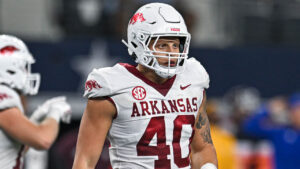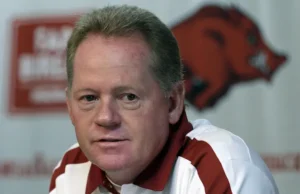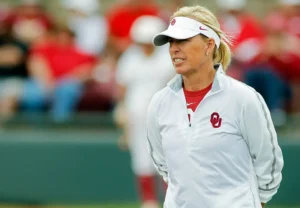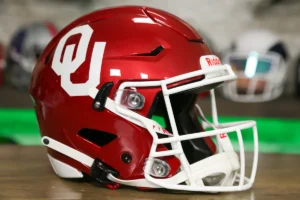
The primary source of optimism for the Razorbacks revolves around Armstrong stepping into the WR1 role.
Many Arkansas Razorback fans are feeling optimistic about the wide receiver position, with Andrew Armstrong taking center stage and shouldering much of the expectation.
However, it’s unfair to place all the praise or blame on Armstrong unless he significantly drops passes that are perfectly thrown to him or struggles to get open. Football is a team sport, and every position relies on the collective effort of the team.
In the coming weeks, the narrative surrounding Armstrong and the Razorbacks will be overwhelmingly positive as SEC Media Days kick off in Dallas. Armstrong will face questions when the Hogs take the stage on Thursday.
Arkansas hasn’t had a standout No. 1 receiver since Treylon Burks departed for the NFL, which notably impacted quarterback KJ Jefferson’s performance. Now, quarterback Taylen Green, who arrived in January for spring practice, will take over. While Green showed promise in practice, true game scenarios with full stadiums and high-pressure situations are yet to come.
The current optimism largely hinges on new offensive coordinator Bobby Petrino, renowned for his past successes. However, translating that potential into on-field results remains uncertain, a recurring concern for Coach Sam Pittman.
Right now, discussions are centered on what Petrino has imparted to the team, but the ultimate test lies in how well they perform when it counts. Projections are essentially educated guesses at this stage, and Armstrong’s leadership in receptions doesn’t solely define his role as a No. 1 receiver.
A true No. 1 receiver can turn a negative play into a significant gain, anticipate pressure situations, and adjust routes accordingly—skills that have been lacking in recent years for Arkansas. By September, the team’s progress will provide clearer insights into their potential for the season ahead.







